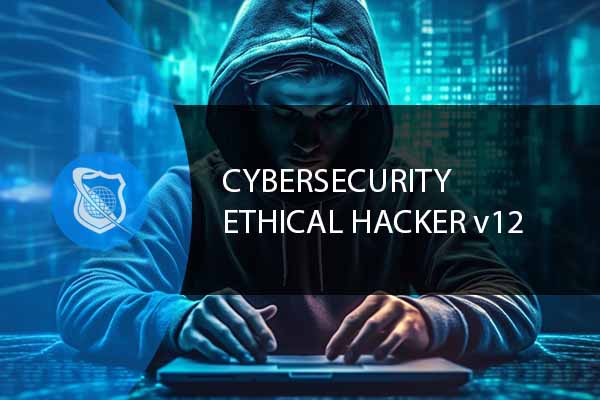What are GraphQL Subscriptions
Definition: GraphQL Subscriptions GraphQL Subscriptions are a feature of the GraphQL specification that allow clients to receive real-time updates from the server. They provide a way to push data from

In today’s digital age, the importance of cybersecurity cannot be overstated. With an ever-increasing number of cyber threats, understanding cyber security examples is crucial in safeguarding our digital assets. This blog aims to delve deep into the role of cyber safety in modern protection, exploring various facets of cybersecurity through real-life examples, definitions, and scenarios.
Before we venture into examples of cybersecurity, it’s imperative to grasp what it encompasses. Cybersecurity is the practice of defending computers, servers, mobile devices, electronic systems, networks, and data from malicious attacks. It’s a broad field that encompasses everything from information technology (IT) security to online security.
Cybersecurity isn’t just about preventing unauthorized access; it’s also about ensuring the confidentiality, integrity, and availability of information. In a world where data is a valuable commodity, safeguarding this information becomes a paramount concern for individuals, businesses, and governments alike.
When we talk about cybersecurity, we’re discussing a multifaceted approach that includes technological, procedural, and managerial measures. From deploying advanced encryption techniques to implementing robust network security protocols, cybersecurity encompasses a wide range of practices designed to protect digital and non-digital information from threats.

Your career in information technology last for years. Technology changes rapidly. An ITU Online IT Training subscription offers you flexible and affordable IT training. With our IT training at your fingertips, your career opportunities are never ending as you grow your skills.
Plus, start today and get 30 days for only $1.00 with no obligation. Cancel anytime.
Cyber safety, often used interchangeably with cybersecurity, refers to the practice of using the internet safely and responsibly. It involves protecting oneself and others from online harms such as cyberbullying, fraud, and data breaches. Understanding the definition of cyber safety lays the foundation for comprehending its role in modern protection.
But cyber safety goes beyond mere protection. It’s also about education and awareness. It’s about equipping individuals with the knowledge and tools they need to navigate the digital world securely. Whether it’s recognizing phishing emails, understanding the importance of strong passwords, or being aware of the latest cyber scams, cyber safety education plays a crucial role in overall cybersecurity.
Moreover, cyber safety is not just an individual responsibility; it’s a collective effort. It involves collaboration between various stakeholders, including governments, businesses, and educational institutions, to create a safer digital environment. By fostering a culture of cyber safety, we can work towards a future where the internet is not just a space for innovation and communication but also a secure and trustworthy domain.
In essence, understanding the nuances of cybersecurity and cyber safety is vital in today’s interconnected world. By exploring various cyber security examples and comprehending the importance of cyber safety, we can better equip ourselves to face the digital challenges of the 21st century and beyond.
Understanding cyber security examples is key to grasping the full spectrum of threats in the digital world. These examples highlight the diversity and complexity of cyber attacks.
Phishing attacks stand as a prevalent cybersecurity example, demonstrating the cunning tactics of cybercriminals. These attacks often involve creating fake emails or messages that mimic legitimate organizations to deceive individuals into divulging sensitive information like login credentials or financial details. These deceptive communications can appear incredibly convincing, often leading unsuspecting users to inadvertently compromise their own security.
One of the more sophisticated phishing techniques involves spear-phishing, where attackers tailor their deceptive messages to specific individuals, often using personal information to increase the likelihood of success. These personalized attacks require a deep understanding of cyber safety to be effectively countered.
Ransomware has emerged as one of the most feared types of malware, and for good reason. It is a form of malicious software designed to block access to a computer system or encrypt data until a sum of money is paid. The WannaCry ransomware attack, which struck in 2017, serves as a stark reminder of the havoc such attacks can wreak. It exploited a vulnerability in Microsoft Windows and spread rapidly across networks, affecting organizations worldwide and causing billions in damages.
This incident underscores the necessity of robust IT security examples in practice, such as regular software updates and backups, which can mitigate the impact of such attacks. It also highlights the evolving nature of cyber threats and the importance of staying informed about the latest cybersecurity examples.
DDoS attacks represent another formidable cyber attack scenario, where multiple compromised computer systems attack a target, such as a server, website, or network. These attacks flood the target with overwhelming amounts of traffic, making it difficult or impossible for legitimate users to access the service. These attacks can be particularly damaging to businesses, causing significant downtime and loss of revenue.
DDoS attacks often exploit the collective power of a botnet—a network of infected devices—which can be spread across the globe. This global aspect of cybersecurity threats underlines the need for comprehensive online security examples and international cooperation in combating such widespread digital threats.
When delving into the practical aspects of cybersecurity, a closer look at various IT security examples offers invaluable insights. These examples not only illustrate effective strategies but also underscore the multifaceted nature of protecting digital assets.
One quintessential example is the implementation of firewalls. These network security systems act as barriers, filtering incoming and outgoing network traffic based on an organization’s previously established security policies. They are essential in thwarting unauthorized access and mitigating potential threats.
Antivirus software represents another fundamental layer of defense. By identifying, quarantining, and eliminating malicious software, antivirus programs play a critical role in safeguarding systems from various forms of malware that could compromise data integrity.
Moreover, regular security audits are indispensable in the realm of IT security. These systematic evaluations of security infrastructure help organizations identify vulnerabilities, ensuring that security measures are both effective and up-to-date. Regular audits, coupled with comprehensive risk assessments, form the backbone of proactive cybersecurity strategies.
Employee training is yet another crucial element. With human error often cited as a significant factor in security breaches, equipping staff with the knowledge and skills to recognize and avoid potential threats is paramount. This involves training in identifying phishing attempts, following best practices for password management, and understanding the importance of regularly updating software.

Ready to become an unstoppable force in cybersecurity? Our Certified Ethical Hacker V12 course is your gateway to mastering the art of ethical hacking. Dive deep into vulnerability analysis, target scanning, and stealthy network penetration. With hands-on activities and expert insights, you’ll learn to break into target networks, gather evidence, and exit without a trace. Don’t just learn to hack—learn to hack like a pro!
Understanding the language of cybersecurity, often referred to as cybersecurity English, is crucial for comprehending the complexities of this field. This specialized language comprises a myriad of terms and concepts that form the foundation of cybersecurity knowledge.
Familiarity with terms such as malware, an umbrella term for various malicious software like viruses and trojans, is essential. Understanding what a firewall does and its role in network security is equally important. Encryption is another key term, denoting the process of converting data into a code to prevent unauthorized access—a cornerstone of secure data transmission.
Other terms like VPN (Virtual Private Network), SSL (Secure Sockets Layer), and IDS (Intrusion Detection System) are also part of cybersecurity English. These terms not only facilitate effective communication among professionals but also enable individuals to better understand the measures being taken to protect their digital information [1].
When exploring online security examples, it’s important to recognize the measures taken to protect digital identities and assets in the expansive virtual world. These examples provide practical insights into safeguarding digital footprints.
Two-factor authentication (2FA) stands as a primary example. This security process adds an additional layer of protection by requiring two forms of identification before granting access. It significantly reduces the risk of unauthorized access, even if a password is compromised.
Secure password creation is another fundamental aspect of online security. It involves using complex, unique passwords for different accounts, ideally managed through a reputable password manager. This practice mitigates the risk of unauthorized access due to weak or reused passwords.
Careful management of digital footprints is also pivotal. This encompasses being mindful of the information shared online, understanding privacy settings on various platforms, and being aware of the digital trails left behind. In a world where data privacy is increasingly under threat, managing one’s digital footprint becomes crucial in maintaining online security.
In conclusion, the role of cyber safety in modern protection is an indispensable aspect of our increasingly digital lives. Through exploring various cyber security examples, from phishing attacks to DDoS assaults, we gain invaluable insights into the complexities and nuances of digital threats. This knowledge is not just about defense; it’s about empowerment. Being proactive in implementing IT security measures, understanding the language of cybersecurity, and practicing vigilant online behavior are key elements in safeguarding our digital existence.
In an era where cyber threats are continuously adapting and evolving, our approach to cybersecurity must also be dynamic. Staying informed, prepared, and responsive is not just a recommendation; it’s a necessity. As we navigate the intricate landscape of the digital world, let us remember that our best defense lies in our collective awareness, preparedness, and commitment to cyber safety.
Cyber security examples range from phishing attacks, where individuals are tricked into giving away sensitive information, to ransomware attacks, like WannaCry, that hold data hostage. DDoS attacks that overwhelm systems with traffic are also common examples of cyber threats.
Protecting yourself involves multiple steps: use strong, unique passwords for different accounts, enable two-factor authentication, keep software updated, and be cautious of suspicious emails or messages. Regularly backing up data is also crucial in safeguarding against ransomware attacks.
Firewalls act as a barrier between your computer and the internet, monitoring incoming and outgoing traffic based on security rules. They are crucial in preventing unauthorized access and blocking malicious traffic, thereby playing a significant role in your overall cybersecurity strategy.
Understanding cyber security examples helps in recognizing potential threats and the methods used by cybercriminals. This knowledge is crucial in adopting effective preventive measures and in developing a proactive mindset towards cybersecurity.
Keeping software updated is vital as updates often include patches for security vulnerabilities that could be exploited by hackers. By updating regularly, you reduce the risk of becoming a victim of cyber attacks that target these vulnerabilities.

Embark on a Thriving Cybersecurity Career! With our Ultimate Cyber Security training courses, you’ll dive into the world of ethical hacking, penetration testing, and network security. Our 15 comprehensive courses, led by industry experts, will equip you with essential Cybersecurity skills, setting you on the path to success in this ever-evolving field.
You may also like:
Attack Hacking: The top 10 Types of Attacks in Cybersecurity
Cybersecurity : The Importance of IT in Cyber Security
A Degree in Cybersecurity : What You Need to Know Before Enrolling
Advanced Cyber Security Salary : How Certifications Can Boost Your Pay
Lorem ipsum dolor sit amet, consectetur adipiscing elit. Ut elit tellus, luctus nec ullamcorper mattis, pulvinar dapibus leo.
$49.99 Original price was: $49.99.$16.99Current price is: $16.99. / month with a 10-day free trial
Definition: GraphQL Subscriptions GraphQL Subscriptions are a feature of the GraphQL specification that allow clients to receive real-time updates from the server. They provide a way to push data from
Definition: Group Policy Object (GPO) A Group Policy Object (GPO) is a set of rules and settings within Microsoft Active Directory that control the working environment of user accounts and
Definition: Multisource Feedback Multisource feedback, also known as 360-degree feedback, is a performance appraisal system where employees receive confidential, anonymous feedback from the people who work around them. This typically
Definition: Python BeautifulSoup BeautifulSoup is a Python library used for parsing HTML and XML documents. It creates a parse tree from page source code that can be used to extract
Definition: Extensible Authentication Protocol (EAP) Extensible Authentication Protocol (EAP) is a flexible authentication framework widely used in wireless networks and point-to-point connections. It provides a standard mechanism for support of
Definition: IT Maturity Model The IT Maturity Model is a framework that assesses the maturity and capability of an organization’s IT processes and systems. This model provides a structured approach
Definition: Twitter Bootstrap Twitter Bootstrap, commonly referred to as Bootstrap, is a free, open-source front-end framework for developing responsive and mobile-first websites. It provides a collection of CSS and JavaScript
Definition: Visual Studio Code Visual Studio Code (often abbreviated as VS Code) is a source-code editor developed by Microsoft. It is available for Windows, macOS, and Linux and includes support
Definition: Hashing Algorithm A hashing algorithm is a mathematical function that converts an input (or ‘message’) into a fixed-size string of bytes, typically a digest that appears random. The output,
Definition: Binary Binary is a number system that uses only two symbols, typically 0 and 1. It is the foundational language of computers and digital systems, representing and processing data
Definition: Fiber To The X (FTTx) Fiber To The X (FTTx) refers to a series of broadband network architectures that use optical fiber to replace all or part of the
Definition: Mouseover Mouseover is a term used in web development and user interface design to describe an event that occurs when a user moves their mouse cursor over a particular
ENDING THIS WEEKEND: Train for LIFE at our lowest price. Buy once and never have to pay for IT Training Again.